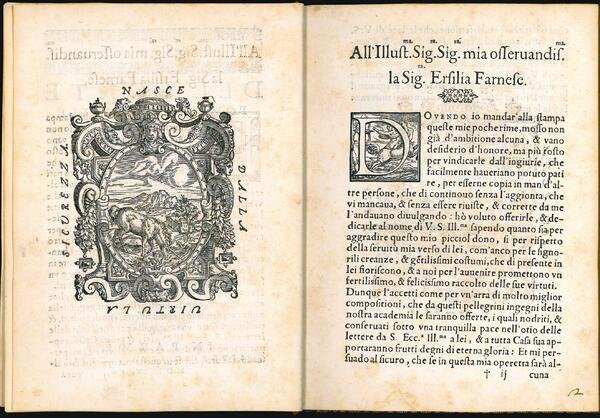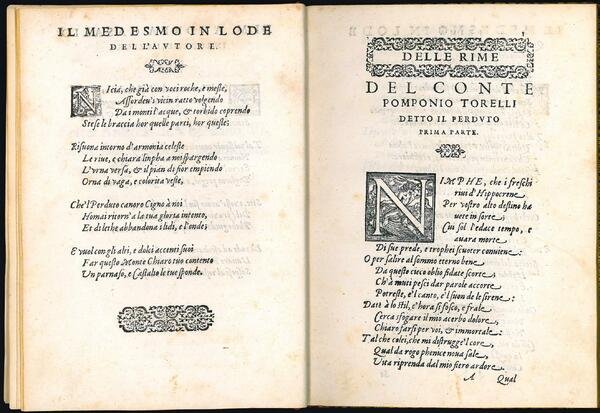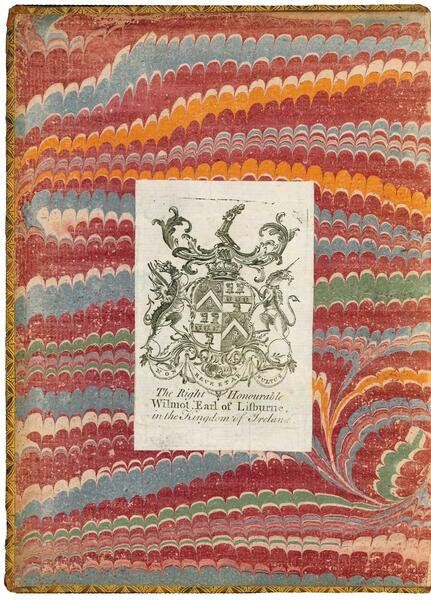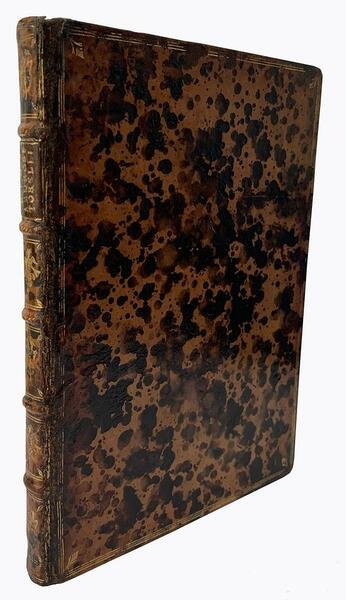




Rare and modern books
Torelli, Pomponio (1539-1608)
Rime amorose del conte Pomponio Torelli detto il Perduto, nell'Academia de gli illustri signori Innominati di Parma
Seth Viotti, 1575
unavailable
Govi Libreria Antiquaria (Modena, Italy)
Ask for more infoThe correct shipping costs are calculated once the shipping address is entered during order creation. One or more delivery methods are available at the Seller's own discretion: Standard, Express, Economy, In-store pick-up.
Bookshop shipping conditions:
For items priced over €300, it is possible to request an instalment plan from Maremagnum. Payment can be made with Carta del Docente, Carta della cultura giovani e del merito, Public Administration.
Delivery time is estimated according to the shipping time of the bookshop and the courier. In case of customs detention, delivery delays may occur. Any customs duties are charged to the recipient.
For more infoPayment methods
- PayPal
- Credit card
- Bank transfer
-
-
Find out how to use
your Carta del Docente -
Find out how to use
your Carta della cultura giovani e del merito
Details
Description
First edition of a vernacular Renaissance Canzoniere dedicated to Ersilia Farnese, one of Duke Ottavio's natural daughters. In the letter dated October 7, 1575 from Parma Torelli explains that he published the collection because several of his compositions were being circulated without his approval.
"In 1575 Torelli was thirty-six years old and probably had recovered completely from the love affair with which his poetry deals. At any rate in that year, he married Isabella Bonelli, who brought him a dowry of twenty thousand gold crowns and whose family ranked high in the hierarchy of the Church. Thenceforth he composed Latin poetry on more serious subjects, commented on Aristotle's Poetics, wrote discourses on moral philosophy, and dedicated his energy to tragedy. The Rime amorose were inspired by a young countrywoman Torelli met soon after 1561, when having completed his studies at the University of Padua, he returned to his native city of Parma. Her identity has not been established, but we know that in 1566 she gave birth to a son, Pompilio, who was eventually dubbed a Knight of Malta, and was probably recognized by his father, who composed for him a sort of gentleman's handbook. The woman may have been extremely attractive, for Torelli not only refers to her as a "leggiadra contadinella', but transforms her into a semi-divine creature nut unlike Laura or Beatrice [.] The edition of 1575 is divided into two parts: The first is composed of ten groups of lyrics, each consisting of ten sonnets, a ballad, and a sestina or a canzone except the third group, who has no ballad. It ends with a narrative poem of twenty ottave. The second part, which is considerably shorter, contains six sonnets, a canzone, a ballad, another canzone, another ballad, eight ottave, seventy verses in terza rima, five eclogues, and a dream poem of a hundred ottave" (A.L. Mezzacappa, Love lyrics of Pomponio Torelli, in: "Italica", 17/2, 1940, pp. 49-50; see also G. Vernazza, Poetica e poesia di Pomponio Torelli, Parma, 1964, pp.159-174).
"Il modello di scrittura poetica offerto da Caro diviene un punto di riferimento importante per gli intellettuali parmensi, e per Pomponio Torelli in primis. Come si mostrerà più compiutamente in seguito, oggetto della poesia non è infatti, per Torelli, il vero (storico e/o naturale), che quindi richiede una forma espressiva razionale, referenziale ed esplicativa; oggetto della poesia è l'immagine mentale ed emotiva di tale vero (copia dunque di secondo grado della verità divina) che ogni individuo ha in sé e che egli può esprimere solo attraverso un linguaggio allusivo, creativo, fortemente icastico. Un linguaggio che, peraltro, consente all'immagine mentale di subentrare al vero naturale quale copia di primo grado della verità divina. Alla poesia viene riconosciuto uno statuto gnoseologico, la forza di andare oltre le apparenze sensibili. La scrittura poetica (e con essa il suo principio ispiratore, l'immaginazione) rappresenta un elemento mediano e dinamico fra intelletto e senso, tra riproduzione razionale del reale e pura favola. Di questo modello poetico – esito di un'ambizione di nobilitazione filosofica della lirica – le Rime amorose di Pomponio Torelli, pubblicate per la prima volta nel 1575, costituiscono una valida esemplificazione" (A. Torre, Pomponio Torelli, gli Innominati e la civiltà letteraria del secondo Cinquecento, in: "Storia di Parma, IX. Le lettere", G. Ronchi, ed., Parma, 2012, p. 110)
Pomponio Torelli was born in 1539 at Montechiarugolo near Parma, which until the creation of the Duchy of Parma in 1545 was in the Duchy of Milan. He was the third son of Paolo Torelli and his second wife Beatrice Pico della Mirandola who was the great-niece of Giovanni Pico della Mirandola. In 1545 Torelli's father died, and he succeeded at the age of six to the title of Count of Montechiarugolo; his mother died in the following year. He was then tutored at home by Andrea Casali a renowned philosopher from Faenza (two of the introductory poems in the present volume are addressed to him). He then studied a Padua under Bernardino Tomitano and Franscesco Robortello. In 1566 he was knighted by the second Duke of Parma, Ottavio Farnese, whom he accompanied to a diplomatic mission to Flanders. In 1573 he married Isabella Bonelli, great-niece of pope Pius V and sister of cardinal Michele Bonelli. The third Duke of Parma, Alessandro Farnese, appointed Torelli as tutor to his son Ranuccio, and entrusted him with diplomatic missions in Flanders and in Spain. Under the nickname Il Perduto, "The Lost One', Torelli was a leading figure in the Accademia degli Innominati, a society of learned and literary men founded in Parma on 13 June 1574, which ceased its activity in 1608, the year of Torelli's death (cf. L. Denarosi, L'Accademia degli Innominati di Parma: teoria letteraria e progetti, 1574-1608, Firenze, 2003, pp. 108-149). Torelli wrote love poetry in the style of Petrarch, his Rime were published in 1575, and in an expanded edition in 1586, and his Scherzi poetici in 1598. His six books of Carmina in Latin were printed in Parma in 1600. His Trattato del debito del cavaliere (1596) and Trattato delle passioni dell'animo contain his Neoplatonic philosophical discussions of affects, emotions, and the duties of a knight. He is however principally remembered for his tragedies: La Merope was published in 1589, Il Tancredi in 1597, La Galatea in 1603, and La Vittoria, and Il Polidoro both in 1605 (cf. F. Bondi, Pomponio Torelli, in: "Dizionario Biografico degli Italiani", Rome, 2019, vol. 96, pp. 512-517).
Edit 16, CNCE39122; Universal STC, no. 859646; J. Balsamo, ed., De Dante à Chiabrera: poètes italiens de la Renaissance dans la bibliothèque de la Fondation Barbier-Mueller, Genève, 2007, II, no. 369; G. Drei, I Viotti stampatori e librai Parmigiani nei secoli XVI-XVII, in: "La Bibliofilia", 27, no, 6/7, 1925, p. 236.

